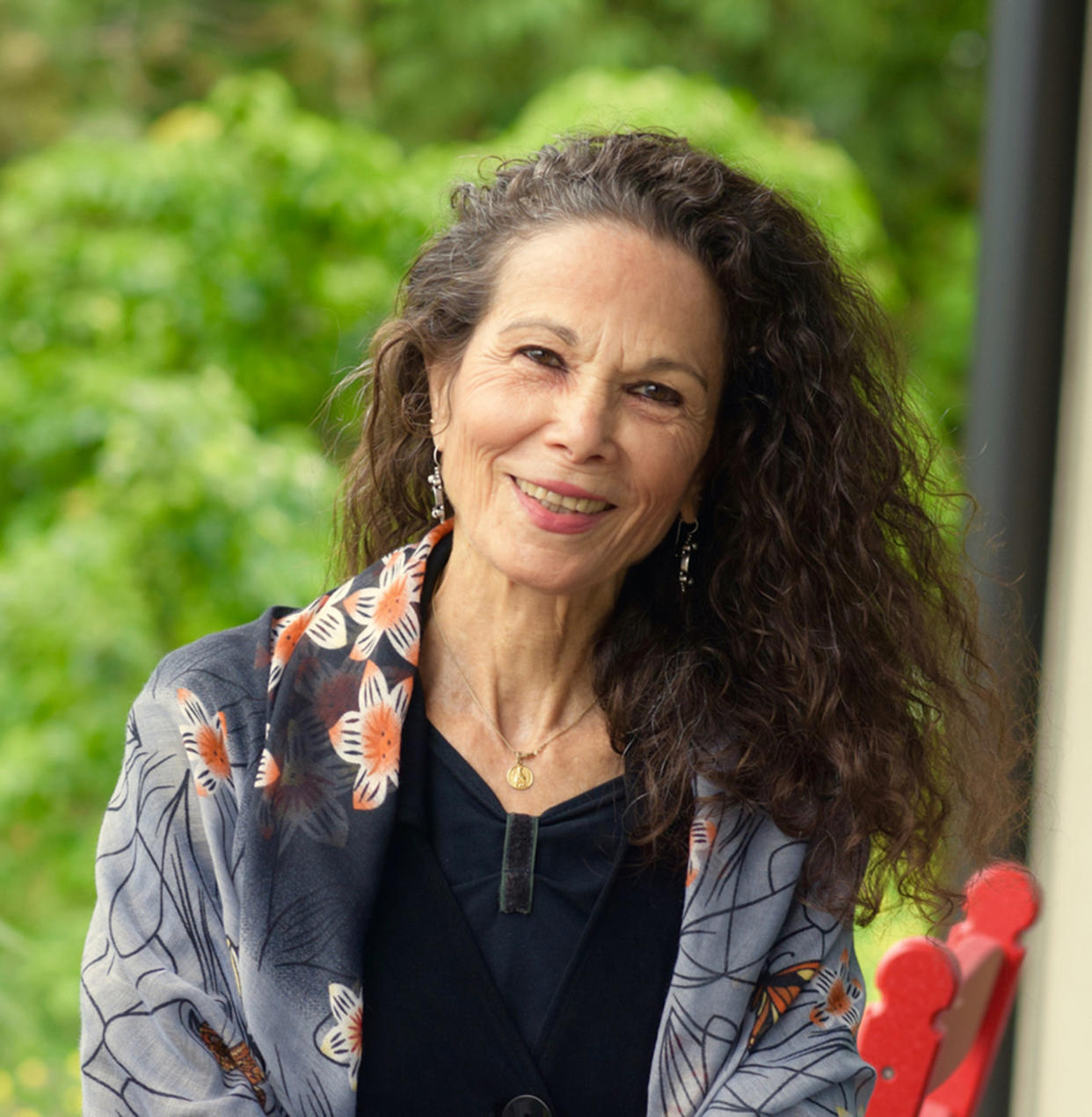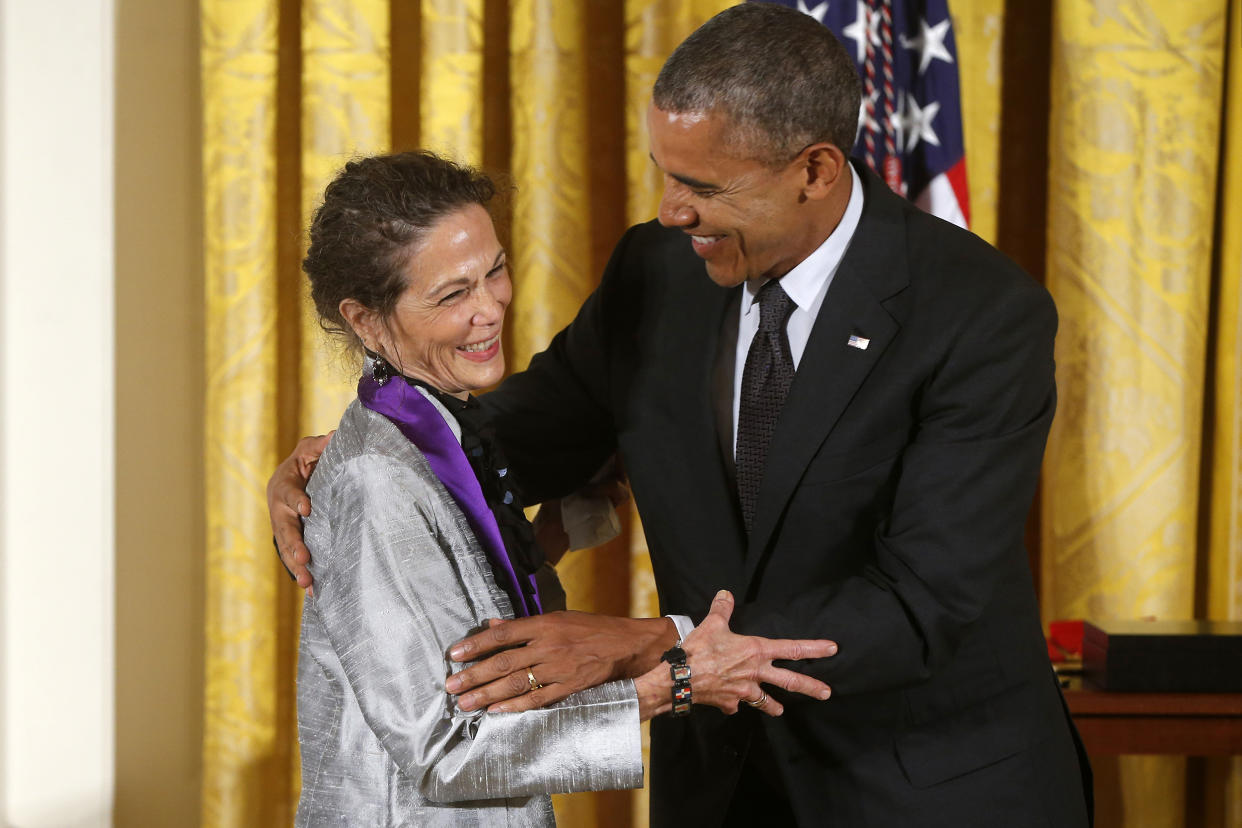30 years later, 'How the García Girls Lost Their Accents' still resonates
During Hispanic Heritage Month, TODAY is sharing the community’s history, pain, joy, and pride. We are highlighting Latino and Hispanic trailblazers and rising voices. TODAY will be publishing personal essays, stories, videos, and specials throughout the month of September and October. For more, head here.
Nelly A. Rosario was a college student in Boston in 1991 when she opened a newspaper and saw a feature story about a Dominican American author. “I closed the paper and took a breath for a moment,” Rosario recalled. “Back then, Dominicans were rarely in the media unless it was related to crime or drugs. Then I read about this Dominican writer, with her book about these girls, and I was just beside myself.”
The book was “How the García Girls Lost Their Accents,” about four sisters from the Dominican Republic, coming of age in the United States. The novel captivated critics and readers, established Julia Alvarez as an emerging literary talent — and provided a window into the bicultural lives of Latino immigrants.
“I was used to reading and trying to find an experience that could approximate mine. I used to wonder, where am I in books? Is there a story about someone like me?” said Rosario, now an author and associate professor of Latina/o Studies at Williams College in Massachusetts. "'García Girls' sent a message that mainstream culture was open for us.”

Thirty years after its initial publication, “How the García Girls Lost Their Accents” has shown remarkable longevity. The novel is now a beloved Latino classic, and a staple of cultural studies courses. It has been translated into 11 languages in 15 countries. And a special anniversary edition of the book will be published in November.
“When I was sending my manuscript out, there was no such thing as multi-cultural books. Latino characters were not really seen as literature,” said “García Girls” author Julia Alvarez, 71. When an agent finally found her a publisher, Alvarez remembers being most excited because having published work would allow her to get tenure at the college where she was teaching. “Then the book came out, and I was discovered at age 41.”
Told in a reverse chronology, Alvarez’s graceful novel follows four sisters across more than three decades. Born into a wealthy Dominican clan, the girls’ lives are uprooted when their family is forced into exile in New York City because of their father’s involvement in an attempted coup against dictator Rafael Trujillo. As the sisters deal with assimilation issues — straightening their hair and figuring out American dating habits — their personal stories play out against a political backdrop.
Alvarez loosely based the book on her own family, which led to problems. “My sisters were angry with me; my mother threatened to bring a lawsuit against me and didn’t speak to me for years.”
“García Girls” was unique for its time because it explored immigration from a female perspective, and because its protagonists were well-off political exiles. The book arrived just after the 1980s, a decade when the U.S. Latino population grew by 53 percent.

“This was a book that was needed when it came out, as Latinos were transforming the U.S.,” said Ramona Hernandez, professor at the City College of New York. “People were hungry to know about us (Latinos) because they were seeing us, and Alvarez came with a narrative that was refreshing.” The fictional García family, Hernandez noted, struggled to hold onto who they were even as they remade themselves in a new country. “This is a universal immigrant experience.”
“The beauty of this book is that she (Alvarez) helps readers learn some history of the Dominican Republic through her characters,” Hernandez added.
While “García Girls” launched Alvarez’s career, it generated controversy as well. Between 2006 and 2008, some parents tried to have the book removed from high school curriculums and libraries on the grounds that it depicted inappropriate situations. Much of this criticism seemed to focus on a chapter in the book where one of the young García girls cannot explain in English that a stranger has exposed himself to her. Such protests struck Alvarez as out of context. “Literature is about the grey areas. It is about raising questions and helping us look at a complex world. It helps us move through the world in situations where good and bad can be braided together.”
A far more common reaction to the novel, especially among Latinas, has been the joy of seeing their lives reflected on the page. “It was the first book I purchased with my own money outside of school,” said Angie Cruz, author of “Dominicana.” “I went to New York City public schools, and I had never been taught writers of color.”
“When I got the book, it planted a seed in me that I could become a writer,” Cruz said. “I hadn’t really thought of myself as much of a reader back then, but for the first time, I thought maybe our stories matter.”

After “Garcia Girls,” Julia Alvarez became an acclaimed writer of fiction, poetry, and young adult books. Her 1994 novel, “In the Time of the Butterflies,” was a fictional look at the real-life Mirabal sisters, who fought to liberate the Dominican Republic from the Trujillo regime. The book was made into a TV movie starring Salma Hayek and Edward James Olmos. In 2014, Alvarez was awarded the National Medal of the Arts. Until her retirement in 2016, she was a writer-in-residence at Middlebury College in Vermont.
“I have been so fortunate,” Alvarez said, “that at one time, the gatekeepers of the (publishing) industry decided to let me in.”
“But I like to remind people that the 'García Girls' is not the story of our people,” she said. “It is a story. There is such diversity in our Dominican and Latinx culture, and there is room for many more voices.”
For more of our Hispanic Heritage Month coverage, tune into TODAY All Day’s special, “Come with Us: Celebrating Hispanic Heritage Month,” hosted by Tom Llamas. Watch Wednesday, Sept. 29, at 12:30 p.m., 4:30 p.m. and 8:30 p.m. EST at TODAY.com/allday.
